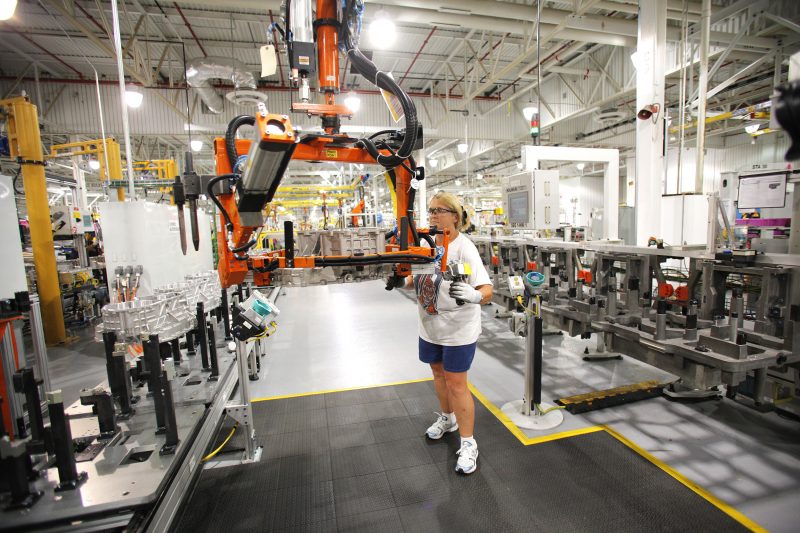US economic growth slightly slower at the start of 2019
Despite solid overall growth, business investment in plant and equipment was its weakest since late 2015 (BILL PUGLIANO)
Washington (AFP) – US economic growth at the start of 2019 was slightly slower than originally reported but remained robust despite President Donald Trump’s extended government shutdown, according to new data released Thursday.
The new estimate left Trump’s economic scorecard largely intact for the first three months of the year, when growth is usually slackens, and gives him a boost ahead of next year’s presidential elections.
GDP growth in the January-March quarter was revised down to 3.1 percent, compared to the 3.2 percent growth reported last month, according to the Commerce Department’s updated report.
The revised data showed American companies spent less on equipment and software but exports rose and consumers bought more cars than previously thought.
And even with the downward revision to growth — which matched economists’ expectations — it was still the hottest first quarter since 2015 and came with rosier new estimates for factory building and manufacturing activity, which were helped by a drop in oil imports.
But economists do not think the momentum can be maintained in the second quarter, especially given troubling signs in other economic reports.
There were worrying signs in the latest GDP data which showed the second straight quarterly drop in corporate profits, which took their biggest tumble in more than three years.
– Weaker investment, spending –
Earnings fell $65.4 billion compared to the final quarter of 2018, the weakest showing since the end of 2015, after falling $9.7 billion at the end of 2018.
The Commerce Department also trimmed estimates for worker pay and inflation-adjusted disposable income, which declined from 2018, suggesting consumers may have less money to spend.
And amid the escalating trade war with China, other signs of weakness persisted, including a downward revision to a key measure of inflation: the personal consumption expenditures price index or PCE.
“GDP remained fairly strong, but core PCE prices were even weaker than before” while investment data “were relatively weak as well,” Jim O’Sullivan of High Frequency Economics said in a research note.
While exports were broadly higher, the report showed imports fell to their lowest in more than six years, suggesting the economy could be running out of steam.
And though consumer spending and business investment were revised upward, both were sharply slower than in the final months of 2018. Business spending on fixed assets like factories and equipment was the softest since the end of 2015.
Chris Low of FTN Financial pointed to the weakness as a troubling signal for growth in the rest of the year.
“This is the core of GDP, consisting of household and business consumption and investment, the driving force behind sustainable growth,” he said. “It sets the tone for future growth.”
Officials say the extended five-week government shutdown early in the year — when Trump unsuccessfully demanded that Congress fund construction of a wall along the southern US border — likely shaved about 0.3 percentage points from growth in the first quarter.
The shutdown immobilized major federal services on which much of the economy depends, such as oil drilling permits, food inspection and ice-breaking at commercial ports.
The Commerce Department will have another chance to revise the first quarter result next month as more data become available.
Disclaimer: Validity of the above story is for 7 Days from original date of publishing. Source: AFP.


